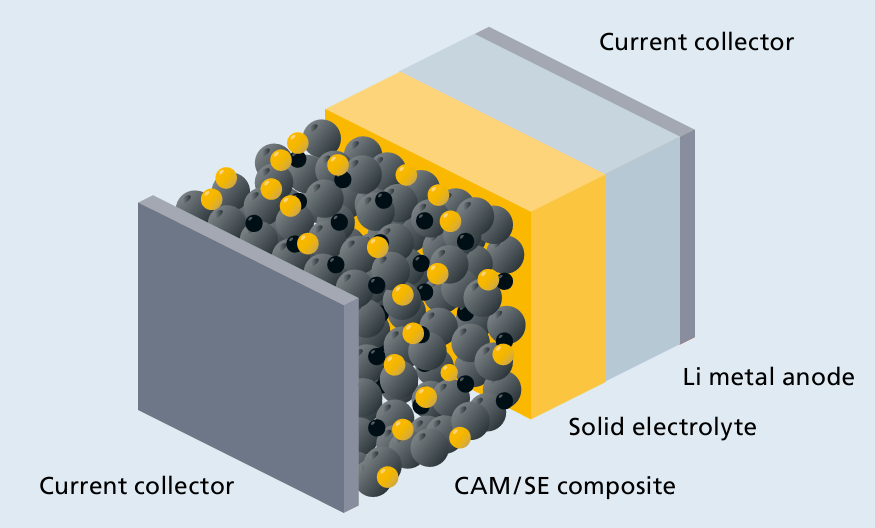COP30 summit urged to propel global climate governance into new stage – Global Times

Report on the 30th UN Climate Change Conference (COP30) and its Alignment with Sustainable Development Goals
Executive Summary
The 30th UN Climate Change Conference (COP30), held in Belem, Brazil, serves as a critical juncture for advancing global climate governance and accelerating progress towards the Sustainable Development Goals (SDGs), particularly SDG 13 (Climate Action). The conference convenes representatives from nearly 200 nations to address the urgent need to limit global temperature increases, enhance national climate commitments, and solidify financial support mechanisms. This report outlines the key objectives, challenges, and collaborative efforts discussed at COP30, with a significant focus on their direct implications for the 2030 Agenda for Sustainable Development.
Conference Objectives and Challenges in Achieving SDG 13
The primary mandate of COP30 is to catalyze global efforts to combat climate change, a goal that is synonymous with SDG 13. However, significant challenges persist in translating commitments into tangible outcomes.
Key Focus Areas
- Limiting Global Temperature Increase: Central to the discussions is the collective effort required to limit the global temperature rise to 1.5 degrees Celsius, a cornerstone of the Paris Agreement and a critical target for SDG 13.
- Nationally Determined Contributions (NDCs): A new, more ambitious round of NDCs is expected. These national action plans are fundamental instruments for countries to outline their contributions to global climate goals.
- Climate Finance: The conference assesses progress on financial pledges made at COP29, which are vital for enabling developing nations to pursue climate mitigation and adaptation, directly supporting SDG 17 (Partnerships for the Goals).
Commitment Gaps and Rising Emissions
A significant disparity exists between stated ambitions and current actions, posing a direct threat to the achievement of SDG 13.
- NDC Submission Lag: A decade after the Paris Agreement, only a third of signatories had submitted their updated, more ambitious NDCs by the September 30 deadline, indicating a lack of urgency.
- Record Carbon Emissions: The Global Carbon Budget 2025 report highlighted that global CO2 emissions from fossil fuels are projected to reach a record 38.1 billion tonnes, a 1.1 percent increase over 2024. This trend directly contradicts the objectives of SDG 7 (Affordable and Clean Energy) and SDG 13.
The Role of Global Cooperation in Advancing the SDGs
Leaders at COP30 universally emphasized that multilateralism and robust partnerships, the essence of SDG 17, are indispensable for effective climate action.
North-South Collaboration and Finance
- UN Secretary-General Antonio Guterres called for a clear pathway to mobilize $1.3 trillion annually for developing countries by 2035 to support their climate transitions.
- This financial support is crucial for fostering a just transition and empowering the Global South to implement solutions that advance SDG 7 and SDG 8 (Decent Work and Economic Growth) through green economies.
- Brazilian President Luiz Inacio Lula da Silva highlighted that cooperation on renewable energy in Latin America and Africa can simultaneously create jobs, stimulate economic growth, and address climate change.
China’s Contribution to Green Growth and Sustainable Development
China’s initiatives, showcased at the China Pavilion, provide a case study in integrating climate action with national development strategies, contributing to multiple SDGs.
Innovative Climate Governance Mechanisms
- Emissions Trading System (ETS): China’s national carbon market, a key tool for achieving SDG 13, has expanded to include steel, cement, and aluminum industries. By October 2025, its cumulative trading volume exceeded 770 million tonnes. This system exemplifies the use of innovative policy to drive decarbonization, aligning with SDG 9 (Industry, Innovation, and Infrastructure).
- International Cooperation: China’s experience in building its ETS is shared to enhance global carbon markets, promoting the principles of SDG 17.
The Green Silk Road and Global Development
- The Belt and Road Initiative (BRI) International Green Development Coalition promotes a comprehensive green transition, creating opportunities for sustainable investment and development.
- This initiative supports partner countries in achieving SDG 8 and SDG 9 by fostering job creation, capacity building, and the development of sustainable infrastructure.
- China’s development of innovative green technologies and its support for the Global South were recognized as significant contributions to the global effort to address climate change and achieve the SDGs.
Analysis of Sustainable Development Goals in the Article
1. Which SDGs are addressed or connected to the issues highlighted in the article?
- SDG 13: Climate Action: This is the central theme of the article. The entire text revolves around the COP30 UN Climate Change Conference, its goals to limit global temperature increase, national commitments (NDCs), and strategies to combat climate change.
- SDG 17: Partnerships for the Goals: The article heavily emphasizes the need for global cooperation. It discusses the gathering of nearly 200 countries, the importance of collaboration between developed and developing nations, financial pledges, and multi-stakeholder partnerships like the Belt and Road Initiative (BRI) International Green Development Coalition.
- SDG 7: Affordable and Clean Energy: The article discusses the global energy transition, highlighting that the growth in energy demand is outpacing the “expansion of renewable energy.” It also mentions “renewable energy cooperation” and China’s achievements in “renewable energy development” as key solutions.
- SDG 8: Decent Work and Economic Growth: The concept of “green growth” is presented as a “new driving force for development.” The article states that renewable energy cooperation and the green Silk Road framework can create “employment and economic opportunity” and “job creation,” linking climate action directly to sustainable economic development.
- SDG 15: Life on Land: The article’s setting in “Brazil’s Amazonian city of Belem” and its reference to the 1992 Earth Summit’s focus on “protection of the environment” implicitly connect the climate discussion to the preservation of terrestrial ecosystems, particularly forests like the Amazon. China’s efforts in “ecological civilization” also align with this goal.
2. What specific targets under those SDGs can be identified based on the article’s content?
-
Under SDG 13 (Climate Action):
- Target 13.2: Integrate climate change measures into national policies, strategies and planning. This is directly addressed through the discussion of the “presentation of new national action plans known as the Nationally Determined Contributions (NDCs)” and the requirement for signatories to submit “more ambitious NDCs this year.”
- Target 13.a: Implement the commitment undertaken by developed-country parties to the United Nations Framework Convention on Climate Change to a goal of mobilizing jointly $100 billion annually by 2020 from all sources to address the needs of developing countries. The article discusses the evolution of this commitment, citing the UN Secretary-General’s call for “a clear pathway to mobilize 1.3 trillion U.S. dollars annually for developing countries by 2035.”
-
Under SDG 17 (Partnerships for the Goals):
- Target 17.3: Mobilize additional financial resources for developing countries from multiple sources. This is explicitly mentioned with the call to mobilize “$1.3 trillion U.S. dollars annually for developing countries by 2035, including 300 billion dollars per year in contributions from developed countries.”
- Target 17.16: Enhance the Global Partnership for Sustainable Development, complemented by multi-stakeholder partnerships. The COP30 conference itself is an example of this global partnership. Furthermore, the mention of the “Belt and Road Initiative (BRI) International Green Development Coalition” serves as a specific example of a multi-stakeholder partnership for green development.
-
Under SDG 7 (Affordable and Clean Energy):
- Target 7.a: By 2030, enhance international cooperation to facilitate access to clean energy research and technology, including renewable energy… and promote investment in energy infrastructure and clean energy technology. This is reflected in the call for “renewable energy cooperation in impoverished regions across Latin America and Africa” and China’s role in supporting the Global South with “innovative green technologies.”
-
Under SDG 8 (Decent Work and Economic Growth):
- Target 8.4: Improve progressively, through 2030, global resource efficiency in consumption and production and endeavour to decouple economic growth from environmental degradation. The article’s focus on “green growth” and China’s “comprehensive green transition” directly relates to this target of achieving economic growth sustainably.
-
Under SDG 15 (Life on Land):
- Target 15.2: By 2020, promote the implementation of sustainable management of all types of forests, halt deforestation, restore degraded forests and substantially increase afforestation and reforestation globally. The choice of Belem, “at the mouth of the Amazon,” for the climate conference underscores the critical link between climate action and forest preservation, which is central to this target.
3. Are there any indicators mentioned or implied in the article that can be used to measure progress towards the identified targets?
Yes, the article mentions several quantitative and qualitative indicators:
-
For SDG 13 (Climate Action):
- Global temperature increase limit: The article explicitly states the goal is to “limit the global temperature increase to 1.5 degrees Celsius.”
- Greenhouse gas emissions: The article provides a specific figure: “Global carbon dioxide emissions from fossil fuels are set to hit a record high in 2025,” reaching “38.1 billion tonnes this year, increasing 1.1 percent over 2024.”
- National climate plans: The submission rate of NDCs is used as an indicator of commitment, with the article noting that “only about a third had done so by Sept. 30.”
- Carbon market metrics: China’s Emissions Trading System (ETS) provides specific indicators of a climate action mechanism: “cumulative trading volume had exceeded 770 million tonnes of carbon allowances, with a total value of over 51.8 billion yuan (about 7.3 billion U.S. dollars).”
-
For SDG 17 (Partnerships for the Goals):
- Financial flows to developing countries: The article specifies a clear financial target that can be measured: the mobilization of “1.3 trillion U.S. dollars annually for developing countries by 2035,” with a sub-indicator of “$300 billion dollars per year in contributions from developed countries.”
-
For SDG 7 (Affordable and Clean Energy):
- Renewable energy vs. demand growth: A qualitative indicator is provided by the statement that “growth in global energy demand continues to outpace the expansion of renewable energy,” which measures the gap that needs to be closed for a successful energy transition.
4. Table of SDGs, Targets, and Indicators
| SDGs | Targets | Indicators |
|---|---|---|
| SDG 13: Climate Action |
|
|
| SDG 17: Partnerships for the Goals |
|
|
| SDG 7: Affordable and Clean Energy |
|
|
| SDG 8: Decent Work and Economic Growth |
|
|
| SDG 15: Life on Land |
|
|
Source: globaltimes.cn
What is Your Reaction?
 Like
0
Like
0
 Dislike
0
Dislike
0
 Love
0
Love
0
 Funny
0
Funny
0
 Angry
0
Angry
0
 Sad
0
Sad
0
 Wow
0
Wow
0


















































.jpg.webp?itok=0ZsAnae9#)





/environment-climate-change-and-health-(ech)/water-sanitation-hygiene-and-health-(wsh)/landfill-tuvalu-36092.tmb-1200v.jpg?sfvrsn=5c21fe40_1#)


















